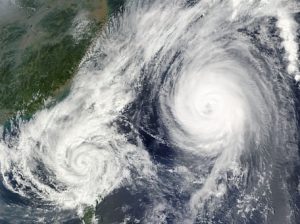The Intensity of Southern Indian Ocean Cyclones Increases in 2019
(May 9, 2019) – Tropical storms and cyclones are a natural and recurring feature in the Indian Ocean but there is evidence that whilst the number of events remains stable the intensity of the storms is increasing.
Published 6 years ago


The cyclone season of 2019 was, therefore, quite average, in so far as there were 15 cyclones recorded. However, all of these cyclones were at least of tropical storm magnitude, which is a record and 11 of them were recorded as cyclones, again a record.
That makes 2019 the second deadliest season ever recorded for cyclones in the Southern Indian Ocean.
In 1892 a cyclone devastated the island of Mauritius killing 1,200, injuring 4,000 and making 50,000 inhabitants homeless. The cyclones of 2019 have claimed 1,100 lives and caused over $1 billion of damage.
Two of the strongest category 5 cyclones, Idai and Kenneth, made landfall on the southeast African coast and caused particular devastation in Mozambique causing the loss of over 1,000 lives.
Sea temperatures have to be 26.5°C for a tropical cyclone to form, but temperatures in the Southern Indian Ocean are reaching 30° for longer periods of time. This, in turn, is a result of a gradual global warming of the oceans. It is likely that the increase in the intensity of these cyclones is a result of the increasing seawater temperatures in the Indian Ocean.
Additionally, because there is global warming, oceans further from the equator, which had sea temperatures below the critical 26°C, are now reaching, and at times exceeding that temperature. As a result, the range in which cyclones occur increases including southern Mozambique which suffered a tropical cyclone in 2017.
As reported by:
http://www.oceannavigator.com/Web-Exclusives-2019/Southern-Indian-Ocean-hurricanes/
Noonsite has not independently verified this information.
Related to following destinations: India, Madagascar, Mozambique, Sri Lanka
Related to the following Cruising Resources: Weather




